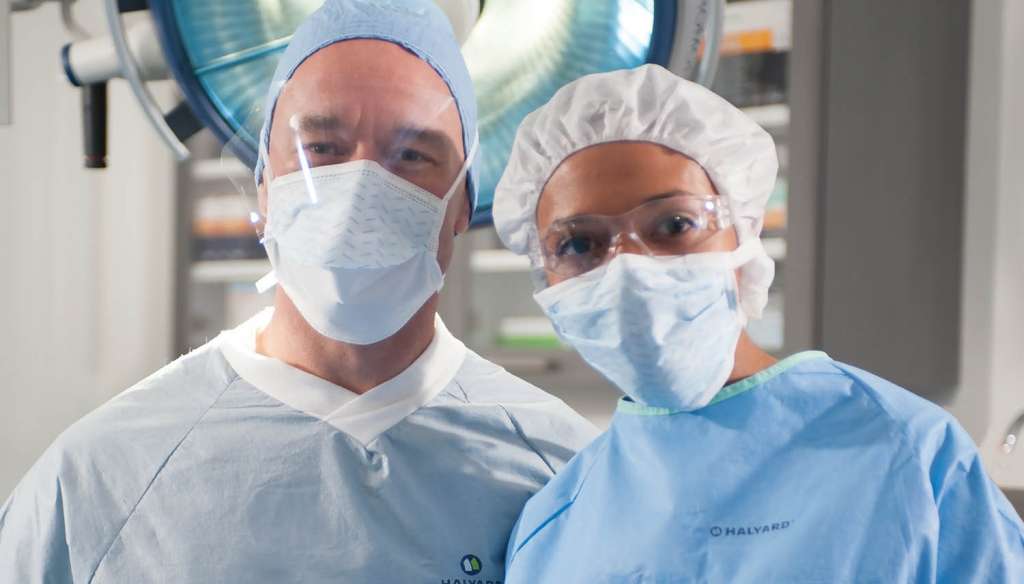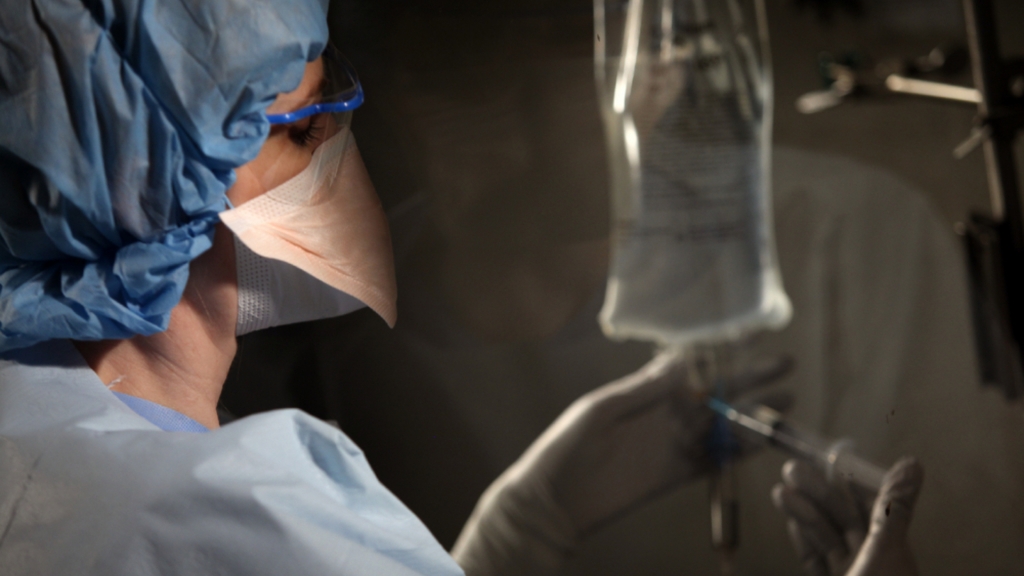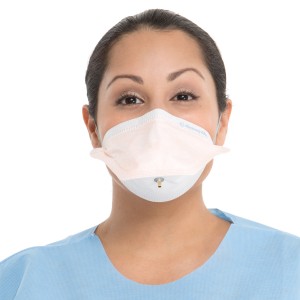Have Standards Been Forgotten Since the Pandemic?
Masks offer two-way protection: they reduce the passage of bacterial particles from surgeons and their teams into the environment or to patients, and they also help protect surgical teams from blood and body fluid splash during procedures. In the operating room, tie masks have long been the de facto standard. But, since the peak of the pandemic, utilization of surgical tie masks has declined. Owens & Minor commissioned a study with surgeons and surgical support professionals to understand why. The study reviewed areas like occurrences of double masking and re-wearing masks, utilization patterns before and after the pandemic, as well as current awareness and compliance with the Association of periOperative Registered Nurses (AORN) industry standard masking guidelines.
The study confirmed that facial protection usage trends have shifted since the pandemic. More specifically, surgical personnel may not be compliant with or aware of AORN mask guidelines as they recover from challenges around supply availability and emergency use authorizations, which may have impacted traditional protocol.
Non-compliance with industry guidelines and adopted practices has a costly impact on the healthcare practitioners, patients and facilities involved. When guidelines are not followed, healthcare professionals are at risk for potential exposure to infectious pathogens during procedures and other activities required for patient care. This could lead to staff becoming sick and the hospital having to compensate for a workplace incident due to negligence or incur additional costs associated with staff shortages.
What are the mask types being used?
According to AORN guidelines, professionals in the operating room must wear masks when spray, splashes, splatter or droplets of blood or other potentially infectious materials may be generated and nose or mouth contamination can be reasonably anticipated.
Luckily, surgical teams have a number of mask options available to them for adequate respiratory protection. These masks have varying levels of breathability, fluid resistance and efficiency in filtering bacteria and particles – ranging from surgical tie masks to surgical N95 respirators.
Surgical tie masks, for example, have long offered reliable protection for operating room personnel. They offer a custom and more comfortable fit to the operating room personnel, help maintain the sterile field, and can be easily removed following a surgical procedure through the breaking of the ties. However, utilization rates of tie masks have shifted since the COVID-19 pandemic. Pre-pandemic, respondents reported wearing surgical tie masks for 87% of surgical procedures, while post-pandemic, that has dropped to 71% of surgical procedures.
Meanwhile, usage of N95 masks increased from 4% pre-pandemic to 13% post-pandemic, particularly among surgical support personnel. In parallel, ear loop mask usage increased from 7% pre-pandemic to 10% post-pandemic.
Per the survey, the most common reason surgical teams are wearing fewer tie masks is because of the selection of mask products provided by the hospital rather than individual preferences. Others cited their facilities having changed masking protocol as a reason and perceived limitations of mask availability. However, another common cause is due to re-wearing masks.
Re-wearing masks – industry standard or pandemic trend?
While re-wearing masks was somewhat common prior to the pandemic, it is even more acute now. In fact, two out of three respondents indicated wearing masks for multiple procedures, which was up from nearly one out of two prior to the pandemic.
Many healthcare workers were encouraged to conserve PPE during the pandemic, which created a lasting habit:
- 40% of all respondents said that re-wearing masks is a habit they established during the pandemic when supply was short
- 50% of surgical support staff selected “current or expected shortage of face masks” as a reason for re-wearing masks
- Only 26% of surgeons cited the same reason, indicating surgical support staff may feel more of the impacts of supply shortages
Perioperative professionals should remember that medical masks, including N95 respirators, procedure masks and surgical tie masks are only intended to be worn once. Luckily, surgical mask supply has increased since the height of the pandemic, and many hospitals have stockpiled their PPE supplies, allowing professionals to select the appropriate mask for use.
In August 2022, the U.S. Food and Drug Administration (FDA) removed surgical respirators from its device shortage list due to having adequate product available, which relieved facilities from having to conserve and stockpile product. Prior to that in 2021, the FDA recommended healthcare personnel and facilities transition away from crisis capacity conservation strategies, given the increased supply of masks and respirators.
This further suggests that re-wearing masks in surgical settings is not necessary, but rather habitual. When asked which types of masks they were most likely to re-wear, 69% of survey respondents said surgical tie masks – demonstrating why utilization rates of new tie masks have decreased.
Re-wearing PPE is comparable to re-wearing potentially infectious pathogens, and with an increase in re-wearing masks comes a greater risk for cross contamination. For the utmost safety of providers and their patients, new PPE should be donned after every procedure.
What guidelines should you be following?
Multiple governing entities have set standards, guidelines and regulations for surgical mask wearing in the U.S. This includes the Centers for Disease Control and Prevention (CDC), the FDA, the National Institute for Occupational Safety and Health (NIOSH) and AORN.
To remind surgical teams of best practices they should follow the below three AORN guidelines around mask usage and fit:1
- The surgical mask should cover the mouth and nose and be secured in a manner that prevents venting at the sides of the mask. Masks with ear loops may not have been designed and intended for use as surgical masks and may not provide a secure facial fit that prevents venting at the sides of the mask. A mask that conforms to the perioperative team member’s face decreases the risk that the health care worker will transmit nasopharyngeal and respiratory microorganisms to the patient or the sterile field.
- A fresh surgical mask should be donned before the health care worker performs or assists with each new procedure. The mask should be replaced and discarded whenever it becomes wet or soiled or has been taken down.
- Only one mask should be worn at a time, and soiled or wet masks should be discarded and replaced.
Almost half of survey respondents indicated that their facilities had made guideline #1 part of their perioperative protocol. However, despite most surgeons and surgical support personnel saying they were familiar with AORN guidelines, many continue to re-wear masks. For AORN guidelines #2 and #3, nearly half of respondents indicated that adherence to the guidelines is not strictly enforced. Across all three guidelines, personal habit and/or personal preference was the top reason for non-compliance.
Masks are most effective when healthcare providers follow the guidelines. Surgical leaders should not only continue to educate their teams on the standards around mask usage, but they should also ensure compliance allowing for optimal provider and patient safety in healthcare settings regardless of a pandemic.




